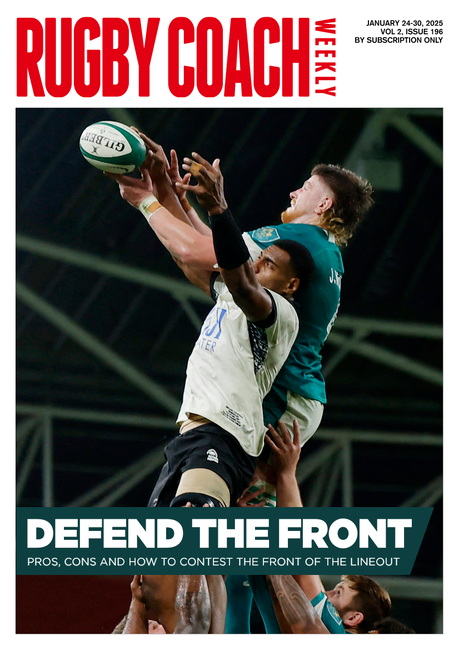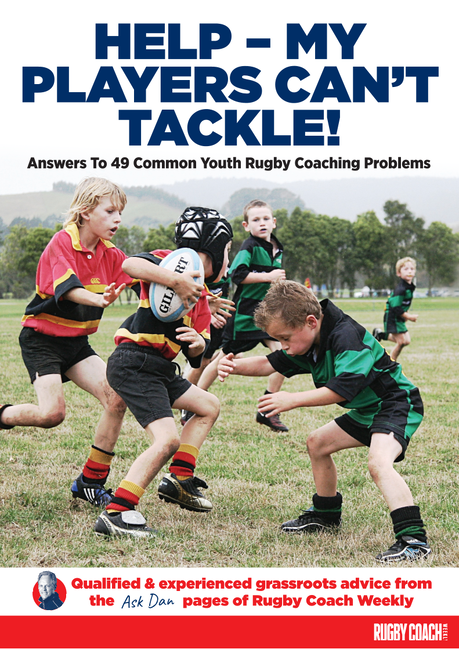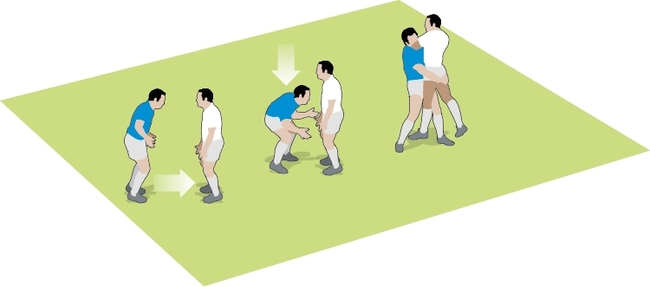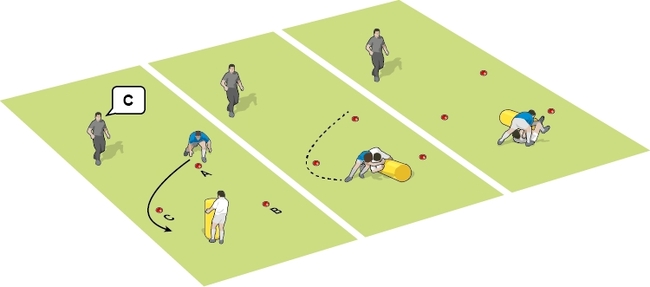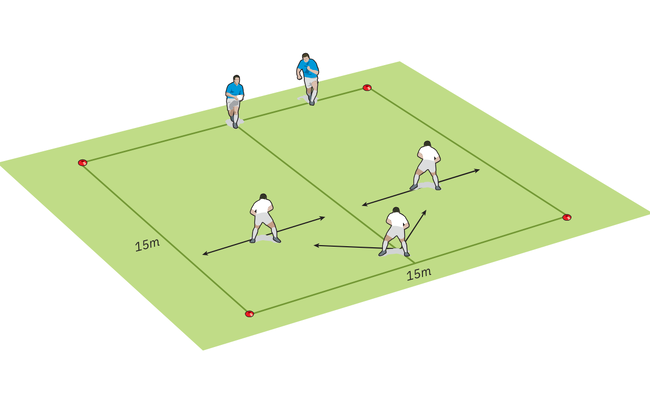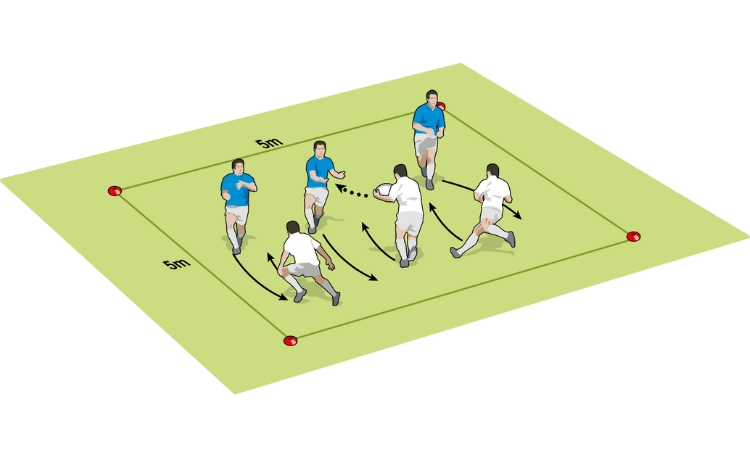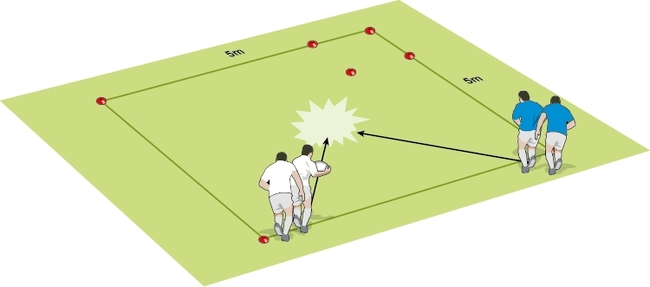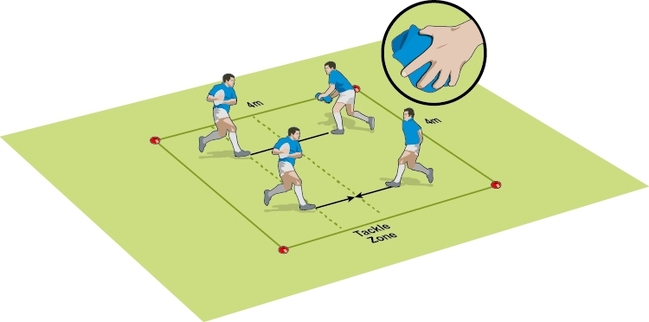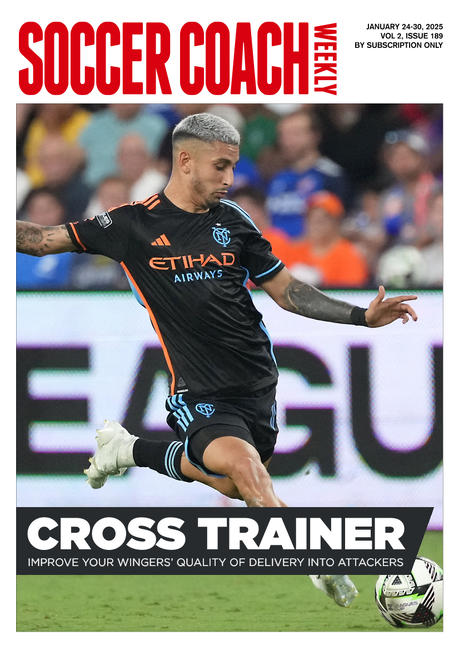Finish is key to the tackle

Because ball carriers make every effort to avoid being tackled, a defender might find themselves struggling to tackle them…to begin with. It’s how you finish that matters, according to Les Kiss, head coach at London Irish. Dan Cottrell explains…
A lot of tackle coaching can be static. The key points are head position, shoulder contact, firm grip and leg drive. There’s a start and finish that sandwiches those key points. We can call the start “tracking” and the finish either “bounce” or “jackle”.
TRACKING
Tracking is all about how a defender intercepts a ball carrier. It’s not as easy as picking out an attacker and following them across the pitch. The ball might be passed, attackers change channels, and other defenders shift, all at the same time.
Ultimately, the defender wants to be in a strong position to complete a tackle. However, the naughty ball carrier isn’t keen to let this happen. This is the crux of Les Kiss’s article on the life cycle of the tackle. Even if we don’t get the tracking spot on, we can still finish the tackle well. In other words, great tracking will lead to a dominant tackle. If the tackler is outthought by the ball carrier, the tackle can nevertheless be successful, though probably not dominant.
BOUNCE
After the tackle, a defender has to bounce out of the tackle and back into the game. The longer they are on the ground, the greater the attacking opportunities for the attack.
JACKLE
A sweet piece of rugby jargon, a jackle refers to the action of a player who aims to steal the attacking ball at the tackle. Often the tackler, if they have dominated the tackle, lands on top of the ball carrier. Now, they can release cleanly, get to their feet and be the first player to challenge for the ball.
COACHING POINTS
TRACKING
In recent weeks, I’ve concentrated on players getting in front of the attackers in touch rugby.
Some teams use “shoulder” touch. It’s only a tackle when the defender can contact with a shoulder. If a shoulder touch is made, the ball carrier has to immediately go to ground.
In this version, it really focuses the player on being in strong position to make a tackle and certainly encourages the ball carrier to use good footwork to avoid it.
As you can guess, it turns into a contact-heavy version of touch – ideal if you want to move onto the next stage.
FINISHING
All tackle practices should have a good finish by the tackler. That means either back out to defend or back in to go for the ball.
Don’t be satisfied by a “loose” finish. Be tough on players who don’t snap back into position. Make it a habit, so a player is immediately assessing what to do next.
For more on how to finish the tackle click here.
Related Files
Premium Books
Newsletter Sign Up
Coaches Testimonials

Gerald Kearney, Downtown Las Vegas Soccer Club

Paul Butler, Florida, USA

Rick Shields, Springboro, USA

Tony Green, Pierrefonds Titans, Quebec, Canada
Subscribe Today
Be a more effective, more successful rugby coach
In a recent survey 89% of subscribers said Rugby Coach Weekly makes them more confident, 91% said Rugby Coach Weekly makes them a more effective coach and 93% said Rugby Coach Weekly makes them more inspired.
Get Weekly Inspiration
All the latest techniques and approaches
Rugby Coach Weekly offers proven and easy to use rugby drills, coaching sessions, practice plans, small-sided games, warm-ups, training tips and advice.
We've been at the cutting edge of rugby coaching since we launched in 2005, creating resources for the grassroots youth coach, following best practice from around the world and insights from the professional game.


